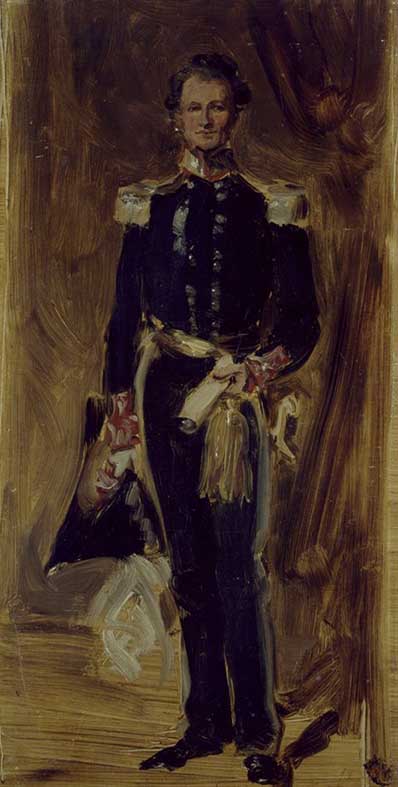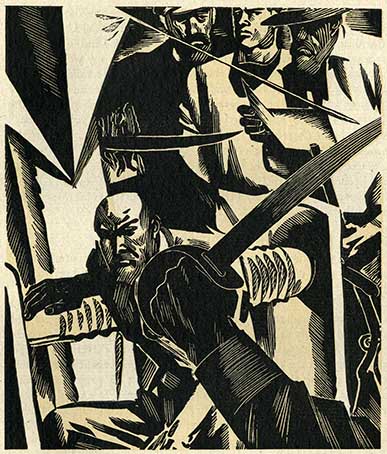Charles Schulze
Contents
Background
Charles Gottieb Schulze was born in Saxony, Germany in 1826.According to Victoria and its Metropolis he attended school until he was 14 years of age. 'At the age of twenty-one he was an experienced builder, determined to go out to the New World'. He sailed for New York in the John Dixon and spent some time in Buffalo.
He spent some time of the Californian goldfields embarking on the ship Afghan, where he 'rounded Cape Horn and reached California after a voyage extending to 197 days.The excitement of life in the Western State was intense in those days, rough and ready and to some extent dangerous. He engaged in mining pursuits at the gold-fields for eighteen months, when early in 1852 the gold discoveries in Victoria supplied more attractions than were to be found locally, consequently he secured a passage on the ship Abysinnia, and after a safe voyage landed in Sydney.'
From Sydney he sailed to Port Phillip per the ship Waratah. He stayed in Melbourne no more than a few days from where he travelled to the rich gold fields of Bendigo.
He first dug for gold in Bendigo, leaving for Ballarat after three months, where he established a bakery at Dunnsford's Hill, Little Bendigo. He sold out after three months, leaving the goldfield for Melbourne. Returning to Ballarat in 1853 after the discovery of the Canadian Nugget Charles Schulze established another bakery with two Americans, in a location between the Canadian and Little Bendigo Rushes. The location later became known as Bakery Hill after his enterprise. The business flew an American Flag. [1] Schulze is most probably like the man referred to in Martha Clendinning's writings. Martha writes: "One day, while our drays were struggling through a swamp a vehicle passed us. On the top of the loading were some large iron troughs, and we learned that the driver was a baker, on his way to start the first bakery on that goldfield. Hitherto the diggers had all baked their own bread, each in a camp oven, as it was termed." She goes on to explain that "The baker whom we saw travelling in the same direction as ourselves was named Edwards. He started his business on a hill at a corner where the Melbourne Road crossed what was and still is termed the Main Roadm near where St paul's Church was subsequently erected. This hill was named Bakery Hill in consequence, and was for many years known by that name and even now those who lived in Ballarat long after that date speak of it under that cognomen." [2]
He married Miss Weller at Christ Church, Ballarat.[3]
Goldfields Involvement, 1854
A transcript of Charles Schulze's account of the killing of James Scobie and the Eureka Stockade is held at the National Library of Australia.[4]
Post 1854 Experiences
Schulze became a member of the Lexton Road Board, and was a councillor with the Lexton Council for 31 years. He won first prize for a sheaf of wheat at the Melbourne International Exhibition of 1880. [5]
Charles Schulze wrote an eyewitness account of the Eureka Stockade. A typed copy could be found in the Ballarat Library Australiana Room in 1999.

- EXTRACTS FROM THE EYE WITNESS ACCOUNT OF EUREKA STOCKADE BY CHARLES G. SCHULZE
- The legislators saw fit to make the Immigrant pay the enormous sum of thirty shillings a month, or a shilling a day, Sunday included, gold or not gold. This law as enforced, at the point of a bayonet, by a troop of old pensioners from Van Dieman's Land, where they had since leaving their Military service, been employed over the convicts.
- The diggers at work were ordered to produce their license otherwise they had to march to the camp to be dealt with, if breaking away, fired at, or not walking fast enough, pricked with a bayonet.
- The discovery of gold at Golden Point, Ballarat, created such excitement in the two small towns of Melbourne and Geelong that all caught gold fever.
- Governor La Trobe even caught up in the excitement, came to Ballarat to see how gold was unearthed and extracted. As his name was Joseph he was generally known as Joe. The word "Joe" was, from that time, a kind of pass word wherever a suspicious person, or trap, as the Police were then called.
- The password was resented by the police as it retarded their success at catching unlicensed diggers. ...
Family
1. Ida Florence Schulze (married a Hewett and lived at Waubra)
In the News
- LEXTONSHIRE COUNCIL. -
- This council held its ordinary meeting on 9th June. Present — Crs James Robertson (president), Robert Giles, Charles Schulze, George Pinch, James Harrison, and Walter Fairlie. Correspondence.— From the shire treasurer of Ripon, remitting £939 ISs 4d as the amount due Lextonshire for toll rents received from the Stony Ford and Burrumbeet gates. From common toll manager, forwarding £18 2s 6d as the Lextonshire's proportion of the Springs gate for the month of May. From the secretary of Ballaratshire, intimating that the consideration of the correspondence in regard to the road south of the Springs tollgate had been postponed. Main Avoca road.—From the engineer's report it was elicited that the maintenance repairs to the road between the Springs and Woodstock would exceed £600 during tho next twelve months, and for which the toll fund expected as available would probably not exceed £200. Cr Schulze remarked that as members were indisposed to admit of the shire fund being expended for repairs on a main road, there was no alternative but the establishment of a toll. For this objective moved that at the next meeting an order for the establishment of a toll-gate at or near the 27th mile-post be taken into consideration. Cr Giles seconded the motion, which was carried. ...[6]
See also
Further Reading
Corfield, J., Wickham, D., & Gervasoni, C. The Eureka Encyclopaedia, Ballarat Heritage Services, 2004.
References
- ↑ Wickham, D., Gervasoni, C. & Phillipson, W., Eureka Research Directory, Ballarat Heritage Services, 1999.
- ↑ Martha Clendinning, Newspaper articles and journal. Manuscript held at State Library of Victoria.
- ↑ Wickham, D., Gervasoni, C. & Phillipson, W., Eureka Research Directory, Ballarat Heritage Services, 1999.
- ↑ NLA MS 9125, See Wickham, D., Gervasoni, C. & Phillipson, W., Eureka Research Directory, Ballarat Heritage Services, 1999.
- ↑ Wickham, D., Gervasoni, C. & Phillipson, W., Eureka Research Directory, Ballarat Heritage Services, 1999.
- ↑ Ballarat Star, 15 June 1869.
External links
http://www.goldmuseum.com.au/ehive-object-details/217715/

